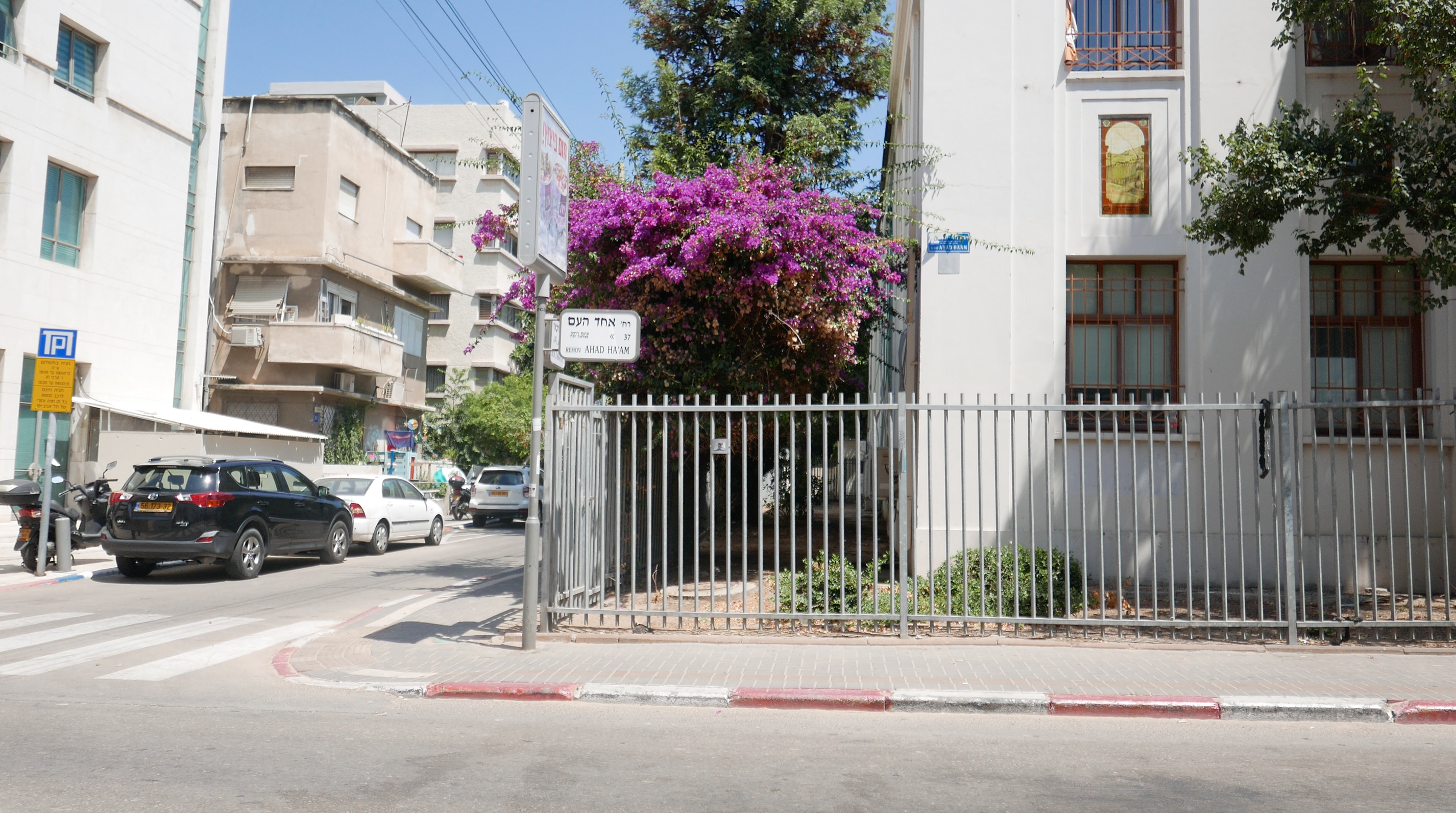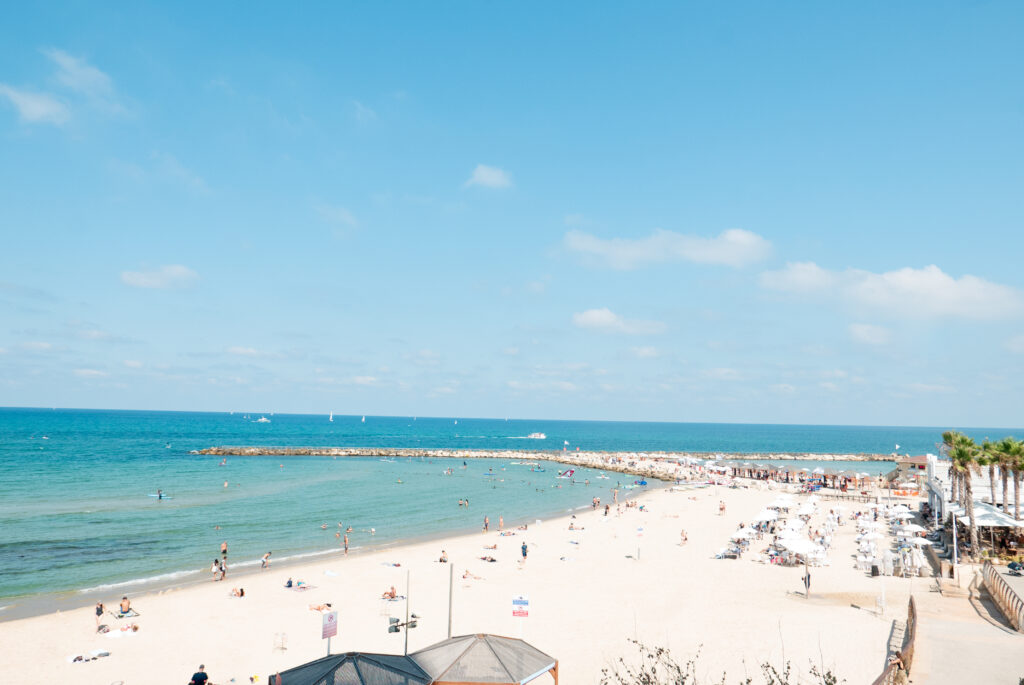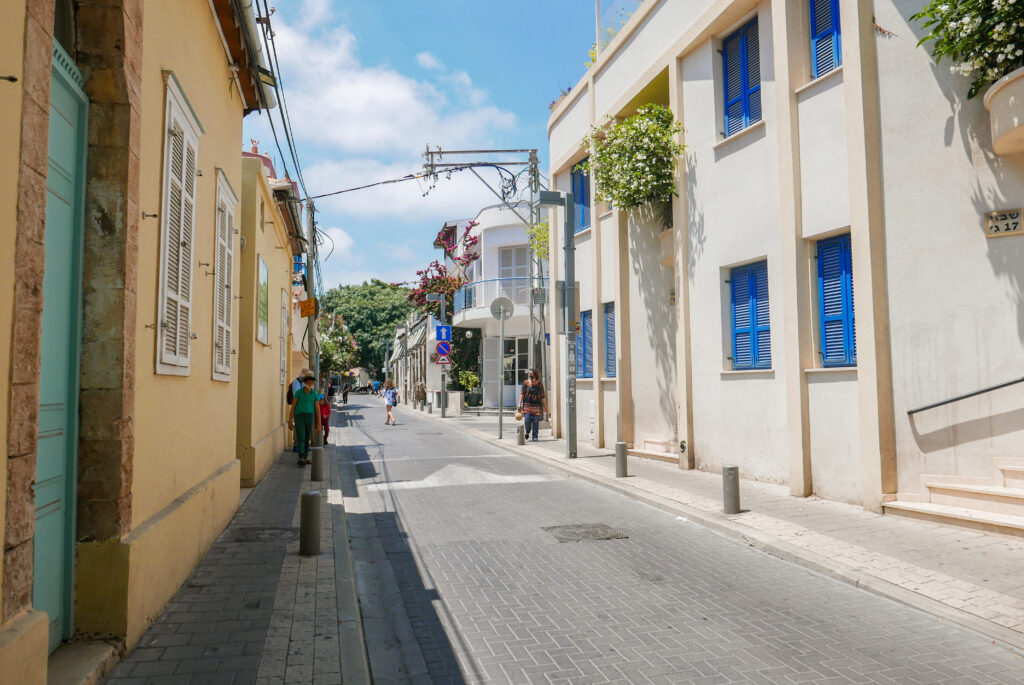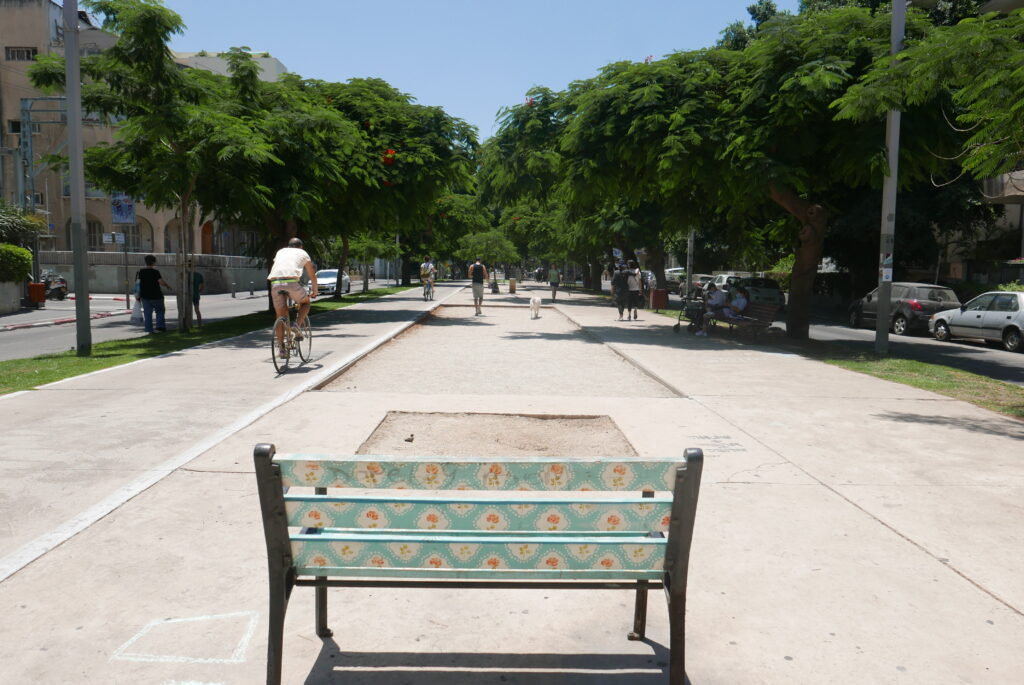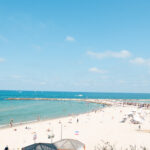The street cuts north from Tel Aviv’s heart, HaBima Square, south to the neighborhoods abutting the Carmel Market: Ehad Ha’am. It’s a narrow street, lined on both sides by beige apartment blocks, the kind seen all over this Mediterranean gem, but also houses the occasional structure to liven up the monotony. Here: Cafe Noir, a Paris-style cafe, shaded by gorgeous trees. There: a gated compound, hiding a pinkish estate with a lavish chandelier hanging in front of the thick, white front doors. Ehad Ha’am is a street that exemplifies the city’s many contradictions. It has unimpressive, diseased-looking apartment blocks priced leagues above their value. Yet it’s also home to gorgeous buildings reminiscent of Europe’s quaintest neighborhoods. It’s parallel to one of Tel Aviv’s busiest thoroughfares, Rothschild Boulevard, but somehow retains a calm, a zen that feels worlds away from the messiness of the city’s busiest corners.
Asher Zvi Hirsch Ginsberg. With a name that long, can you blame him for changing it? Better known by his Hebrew name, Ehad Ha’am (one of the people), was one of the early leaders of the Zionist movement. He aimed to establish a cultural hub where secular Judaism could flourish, leagues away from his native Kyiv, Ukraine, in the Jews’ historical homeland: Israel. After a long stint living in London, Ehad Ha’am settled in Tel Aviv in 1922; the city promptly offered him a home on the street that today bears his name. He died in 1927, and was buried in the nearby Trumpeldor cemetery, which features the remains of some of Israel’s largest figures, including artists, cultural scions, and its second Prime Minister.
Our day walk started at a little cafe positioned on Dizengoff square. On every other day, this square is full of people walking around, having they’re morning coffee or lunch or just hanging on the grass. Today, on the other hand, is a Saturday – a day off for the religious and non-religious in Israel. most places are closed and everyone taking they’re time waking up to start the day.
After having our quick breakfast we started our walk towards Ehad Ha’am street, passing Dizengoff street to get to Habima Square. This is a bigger square than Dizengoff, with two cafes, though people come here for other purposes. Habima is the national theatre of Israel that is closed since Corona days started. The square is built as a two-story open structure, the first level is the actual square, in the middle there’s a little garden, half of it is embedded with flowers and the other full of shading trees. If you sit inside the garden, classical music can be heard, taking you to a different world for a few moments. We like to sit on the second level though. Up there you are surrounded by greenery all around. There are a few spacious benches and here is where we’ll end our day.
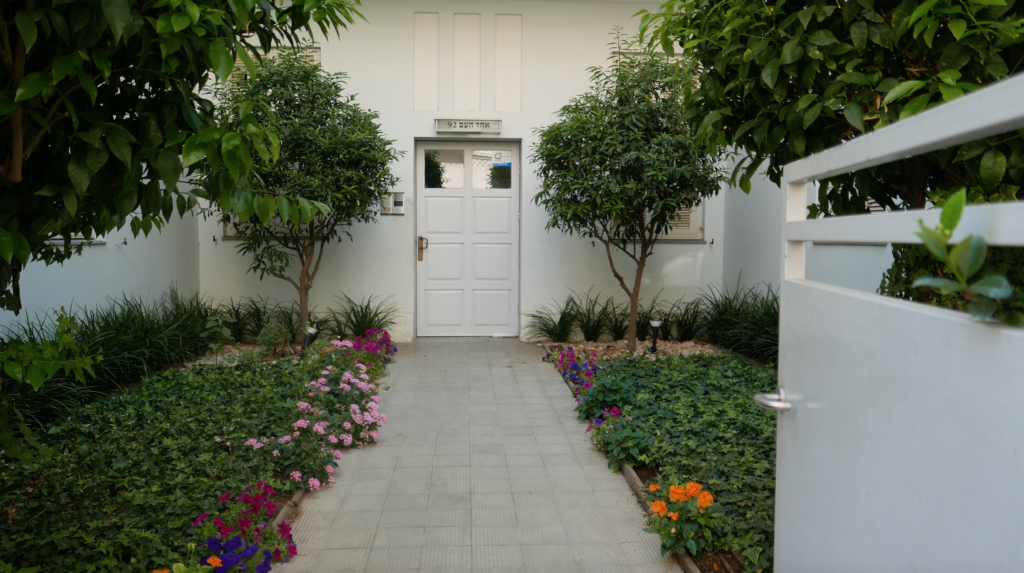
We still have Ehad Ha’am street to see so we kept on going. From Habima square we did a few turns and with not too many steps we reached the beginning of Ehad Ha’am street. Right there a mural on the wall said “well, we’ll talk. we agreed and went quiet”, reminding us of our time’s biggest issue.
Walking on the street we saw the usual crumbling unrenovated buildings you can see everywhere around Tel Aviv dating way before Israel existed. Once in a while we stumbled upon a building that is unusual to this environment. The first one was a light blue building with an amazing garden at its entrance. Looking up you can almost imagine one of those little boutique hotels in France.
While we move on, time is shown to us by a religious man going back home from morning prayers in his local synagogue. He’s passing a beautiful pink mansion totally out of place. Perfectly still, the light is still on in the ceiling lamp, is it out of time as well?
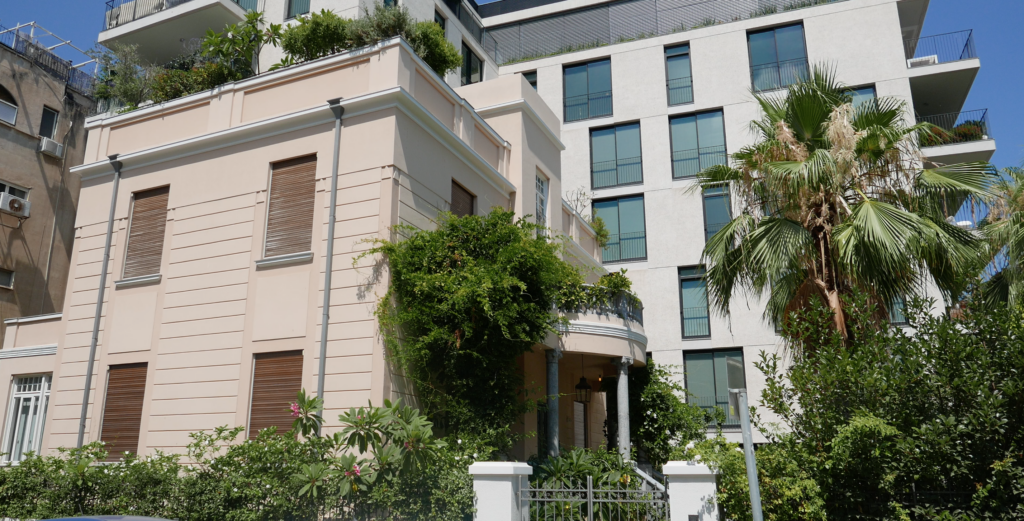
A few meters away from it on the other side of the street, another unique building. The sign on the entrance announces this used to be the tallest building in Tel Aviv – no more than four stories from the ground.
We keep on walking, seeing another building that looks like it’s made for the gods, the Cafe Noir coffee shop, which is closed for the day, and a bright yellow building that pops out from all the rest.
The end of the street is right in front of us in the shape of the Great Synagogue. Walking around the biggest synagogue of Tel Aviv takes a few more minutes; the front of it is decorated in earthy colours. On the side is a big clock showing the time in Hebrew letters telling us it’s time for lunch. On the other side of the pavement is one of the most famous restaurants in the city, representing part of the intertwined life of Israel.
We decided to go back to Habima for lunch. There we had a great omelette and toast for lunch, and to top it off, a huge chocolate cake as a dessert.
Ehad Ha’am advocated planting the seeds of the Jewish Diaspora into the land that was then called Palestine. He envisioned cultivating a safe space where Jews could thrive, culturally and spiritually. The street in the center of Tel Aviv that bears his name is a testament to this dream.
